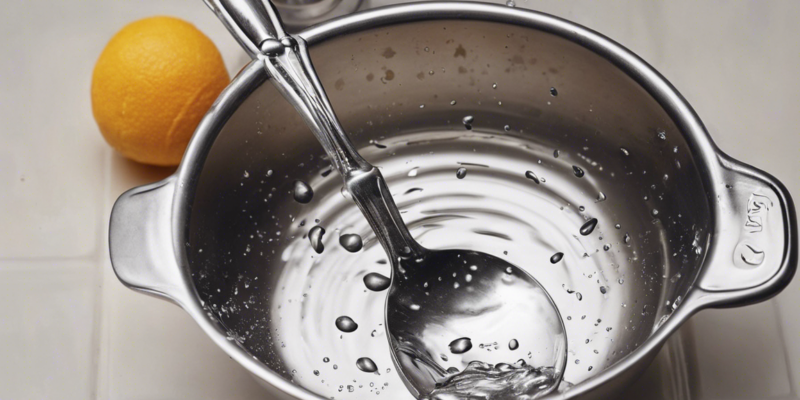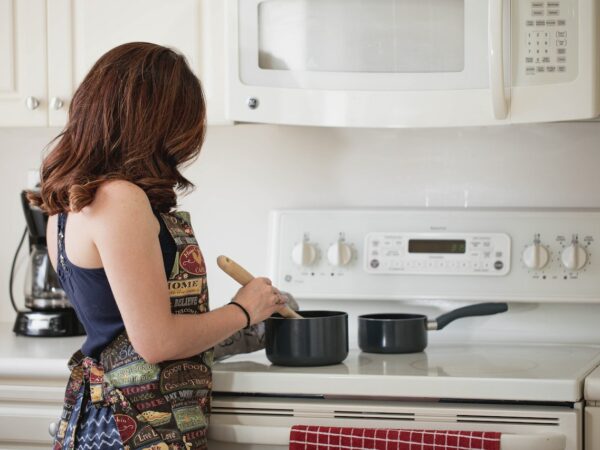
Splash-Free Spoon Washing: Tips for a Mess-Free Clean!
Are you tired of the messy aftermath of washing spoons in your kitchen sink? Splash-free spoon washing is not just a dream – it can be a reality with the right techniques and tools. Whether you are dealing with stubborn stains, sticky residues, or simply want to minimize the mess in your sink area, this comprehensive guide will provide you with the tips and tricks you need to achieve a spotless and splash-free spoon washing experience.
Why Does Spoon Washing Cause Splashing?
Before we delve into the solutions, it’s essential to understand why spoon washing often leads to splashing. The shape and size of spoons, coupled with the force of water from the faucet, create the perfect conditions for splashing. Additionally, the presence of food particles and residues on the spoons can exacerbate the splashing effect.
Tips for Splash-Free Spoon Washing:
-
Pre-Soak the Spoons: If your spoons have dried-on food or sticky residues, consider pre-soaking them in warm, soapy water. This will loosen the particles and make it easier to clean them without vigorous scrubbing, which can lead to splashing.
-
Use a Sink Mat or Towel: Placing a sink mat or a thick towel at the bottom of your sink can help cushion the impact of the spoons when washing them. This not only reduces splashing but also prevents the spoons from clanging against the hard surface of the sink.
-
Adjust the Water Pressure: High water pressure is often the culprit behind splashing. Lower the water pressure when washing spoons to minimize splashing. Alternatively, you can direct the water flow towards the sides of the sink rather than directly onto the spoons.
-
Hold the Spoon Close to the Handle: When washing spoons, hold them close to the handle rather than at the tip. This minimizes the distance the water has to travel, reducing splashing significantly.
-
Use a Soft-Bristled Brush: Opt for a soft-bristled brush or sponge to clean your spoons. Avoid using abrasive materials that can cause splashing by agitating the water vigorously.
Removing Stubborn Stains and Residues:
Sometimes, simple washing may not be sufficient to remove stubborn stains or residues from your spoons. In such cases, consider the following techniques:
-
Baking Soda Paste: Create a paste using baking soda and water, and apply it to the stained areas of the spoon. Let it sit for a few minutes before scrubbing gently with a soft brush. Rinse thoroughly.
-
Vinegar Soak: Soak the stained spoons in a mixture of vinegar and water for about 30 minutes. The acid in the vinegar helps break down the stains, making them easier to remove.
-
Lemon and Salt Scrub: Cut a lemon in half, dip it in salt, and use it to scrub the stains on the spoons. The acidity of the lemon combined with the abrasive salt helps remove tough stains effectively.
Tools for Efficient Spoon Washing:
Investing in the right tools can make spoon washing a breeze. Consider adding the following items to your kitchen arsenal:
-
Soft-Bristled Brush: Use a soft-bristled brush specifically designed for cleaning utensils to ensure effective yet gentle cleaning.
-
Dish Soap Dispenser: A dish soap dispenser with a pump mechanism allows you to dispense soap easily without creating excess bubbles that can lead to splashing.
-
Sink Mat: A sink mat provides a cushioned surface for your utensils, reducing noise and minimizing splashing.
-
Drying Rack: A drying rack with compartments for utensils can help air-dry your spoons efficiently after washing, preventing water spots and ensuring they are ready for use.
Frequently Asked Questions (FAQs):
-
Why do spoons splash more than other utensils during washing?
Spoons have a concave shape that tends to trap water, leading to splashing when the water is agitated. -
How can I prevent water spots on my spoons after washing?
Ensure thorough rinsing and drying of your spoons. Use a soft cloth to dry them immediately after washing to prevent water spots. -
Is it necessary to pre-soak spoons before washing them?
Pre-soaking can help loosen stubborn residues and make cleaning easier. However, it may not be necessary for every wash. -
Can I use a dishwasher for washing spoons to avoid splashing?
Dishwashers can be an effective way to wash spoons without splashing. Ensure you load them properly to prevent nesting and achieve optimal cleaning. -
How often should I clean my kitchen sink and utensils to prevent build-up?
It’s recommended to clean your sink and utensils regularly, ideally after each use, to prevent the build-up of food particles and residues.
Conclusion:
Achieving a splash-free spoon washing experience is not a myth. By incorporating the tips and techniques outlined in this guide, you can make your kitchen cleanup more efficient and enjoyable. Remember to adjust the water pressure, use the right tools, and employ gentle cleaning methods to keep your spoons spotless and free from splashing. With practice and consistency, you’ll soon master the art of splash-free spoon washing in your kitchen.



